Helping forest officials efficiently manage their workload
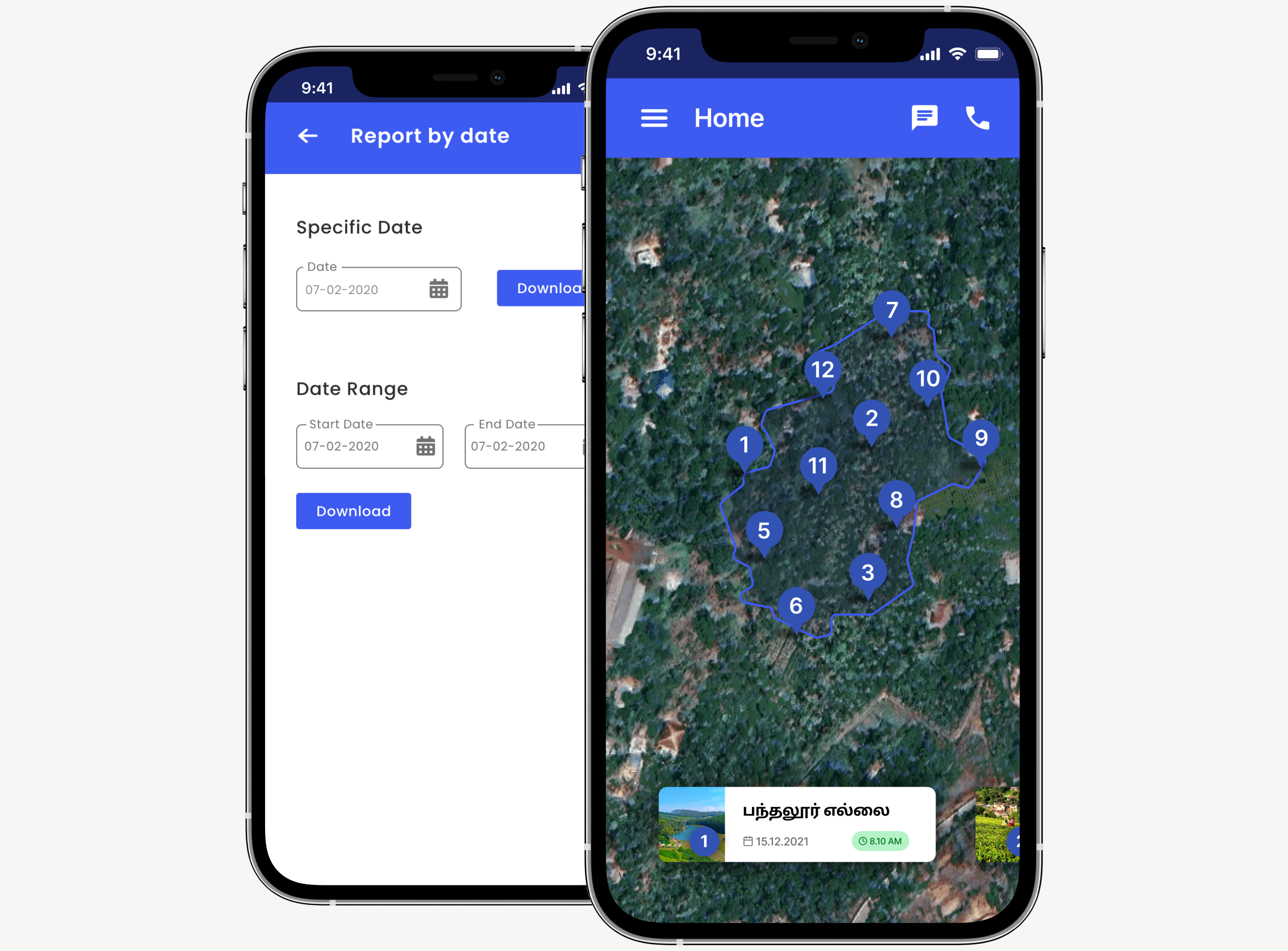

Gudalur, a region in India, is home to approximately 30,000 residents and a diverse wildlife population, notably featuring elephants. The forest officials in this area safeguard both the elephants from poachers and the safety of the locals. A typical day for them involves monitoring and reporting details about elephant herds in specific regions twice a day and alerting residents about elephant movements when elephants approach human habitat areas.
Challenge - Manual logging of elephant counts poses numerous challenges, including difficulties in storing and accessing information. Additionally, the process of informing people about elephant movements often took too long, endangering the safety of residents in some instances.
The journey began with on-field research, during which our team observed, immersed and interviewed people from the surroundings. Once we gained sufficient insights into the situation from the perspectives of the rangers, officials, locals and other user groups involved, we conducted an affinity diagramming workshop. This workshop included a few selected representatives from all user groups to organize our research findings and identify themes and opportunities.
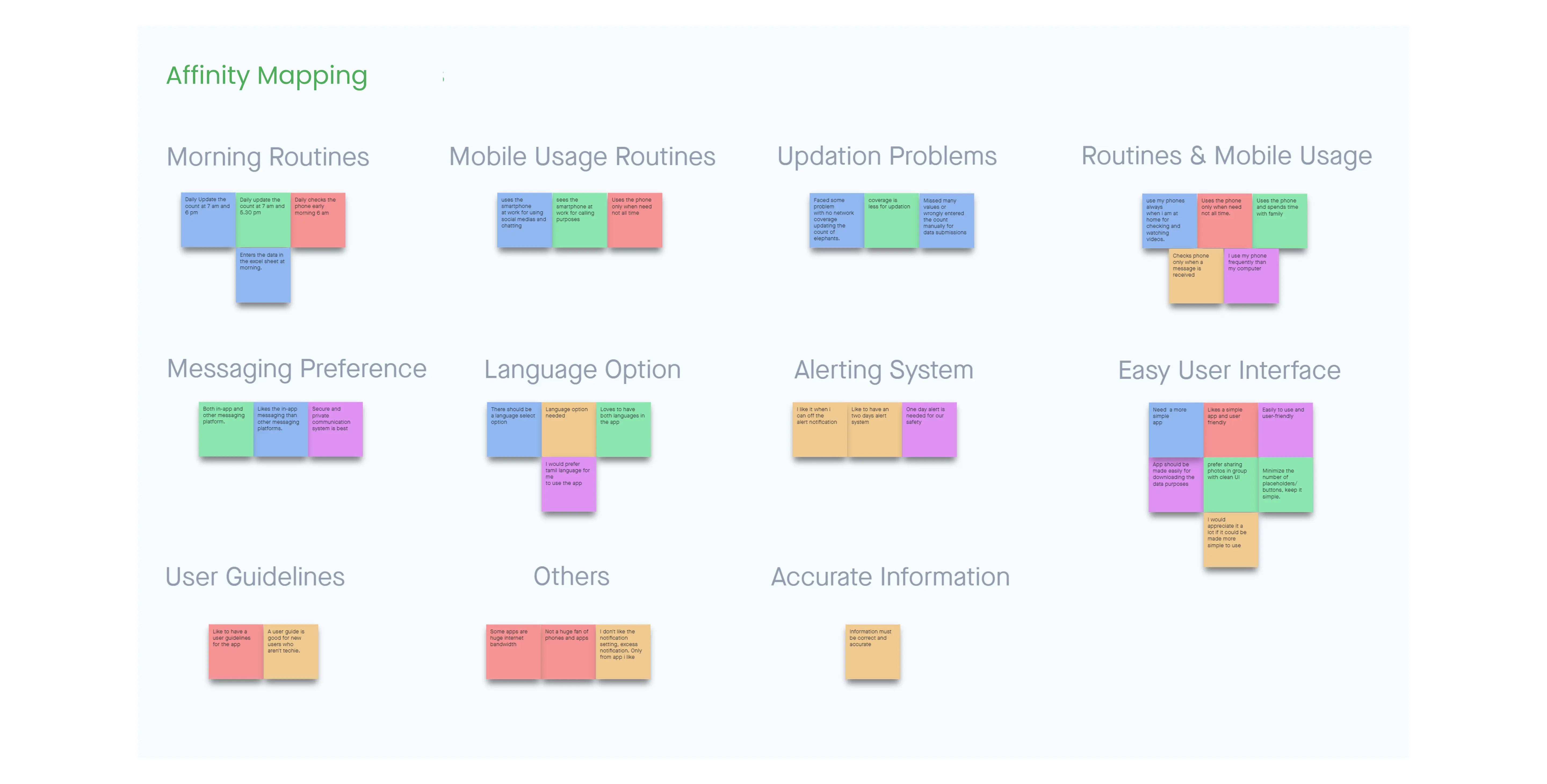
Our research findings highlighted significant challenges for officials in alerting locals, tracking elephant movements, and managing their overall workload.
Alerting users about elephant movements used to be a cumbersome process, involving multiple decision-makers before crucial information reached locals in the affected region. The outdated SMS alert system required a dedicated operator, incurring additional costs and significantly delaying message relay. Moreover, in the absence of the operator or due to maintenance issues, alerting had to be done manually, with officials and rangers physically informing residents.
Reliance on WhatsApp for reporting elephant movements posed challenges in accessing specific information promptly. The practice of updating details only during sightings left gaps, necessitating officials to conduct manual searches in attendance ledgers. This process was cumbersome and risked inaccuracies, especially if ledgers were missing.
Forest rangers encountered challenges, especially at night when limited visibility made it difficult, even with bright long-range flashlights. Despite the presence of cameras, live replays were impractical due to the large size of the data, making wireless relay to the control room difficult. As a workaround, the cameras stored live recordings in a physical card reader. These recordings were reviewed every week to gather insights into elephant movements and behavior.
Observing users using the app helped us refine solutions to best fit their needs and situations during specific actions. We used an impact-effort matrix to prioritize features for each phase of the long-term project.
A mobile app accessible to locals, rangers and officials provides a centralized communication platform. Anyone within the range can report elephant sightings to the key decision-maker—the forest official. The official validates the information and uses the app to broadcast alerts directly to the locals in the specific region. Users have different hierarchies and permissions aligned with their real-world chain of command. This structure prevents the dissemination of false information and facilitates effective decision-making.
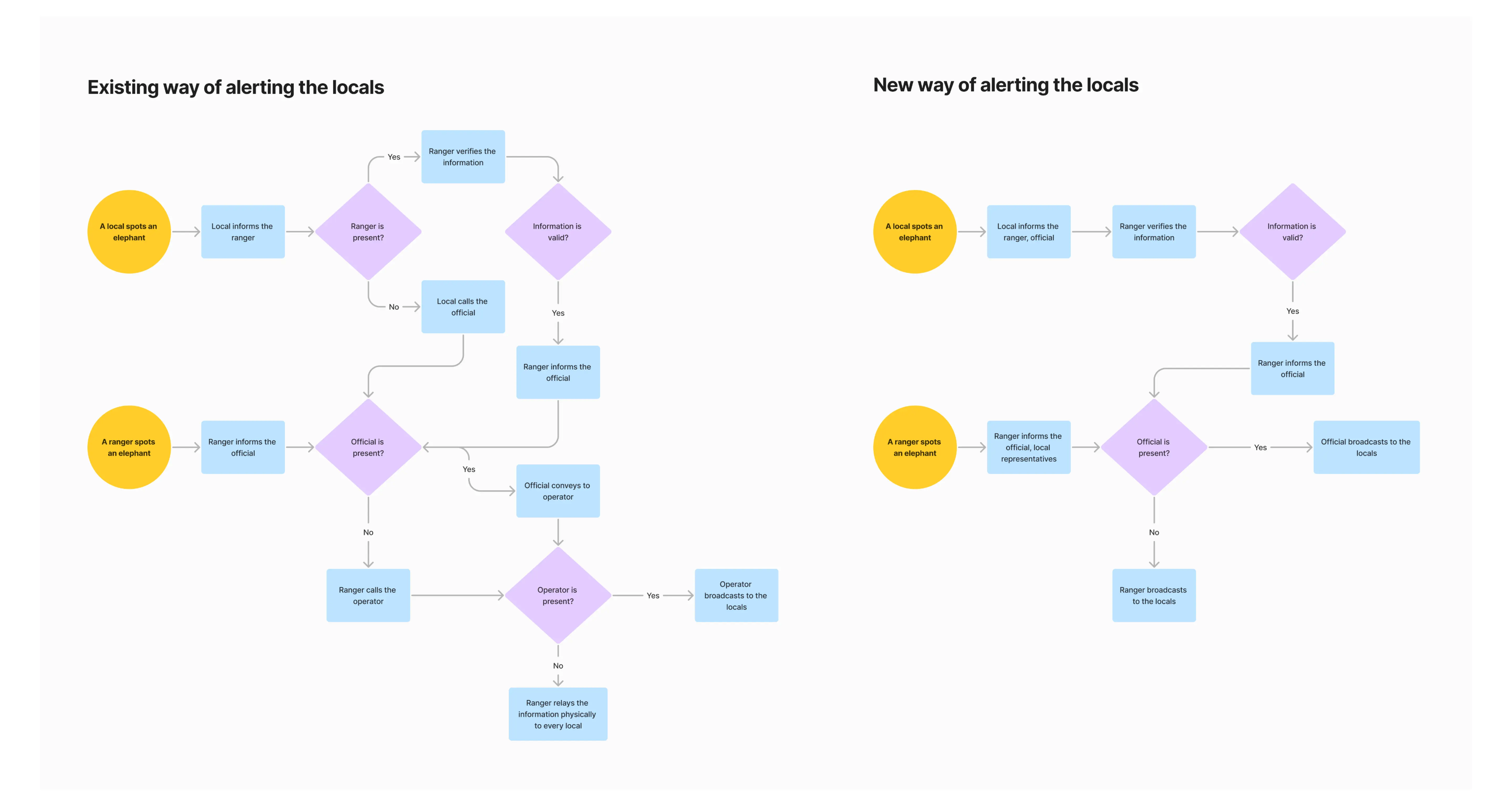
All records, including details about elephant movements and rangers’ attendance, are organized and can be logged and accessed by date, place, and time. To enable quicker and more accurate reporting, the app for the rangers integrated Google Maps with live location. The structured data allows forest officials to easily export and present critical information to their higher-ups at any time.
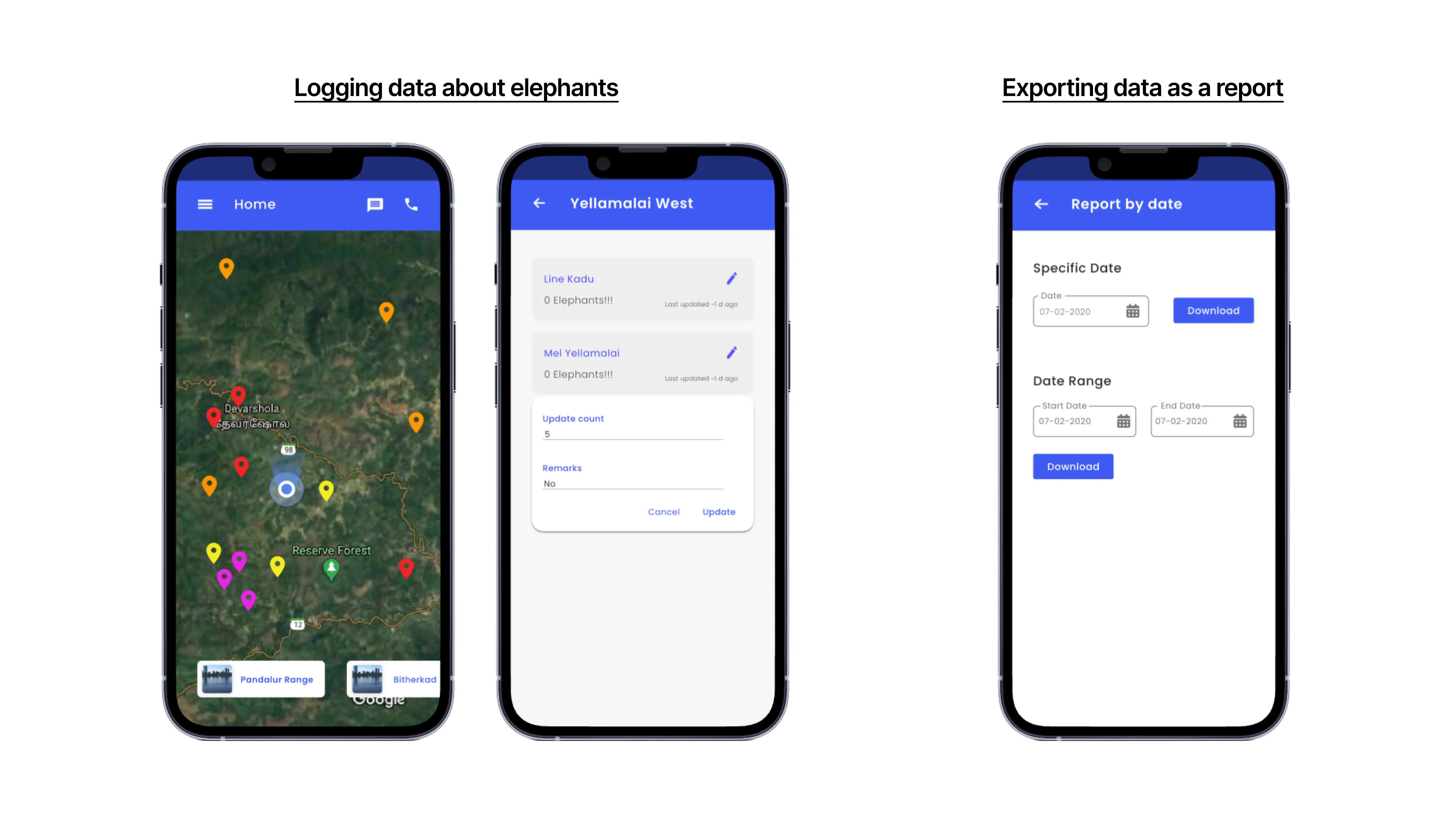
The process of spotting elephants is set to be automated by repurposing existing cameras. Although these cameras cannot transmit live feed to the control room, the data is processed through a plug-in Raspberry Pi computer attached to the camera. This allows for real-time detection of elephant movements, triggering immediate alerts to the forest rangers.
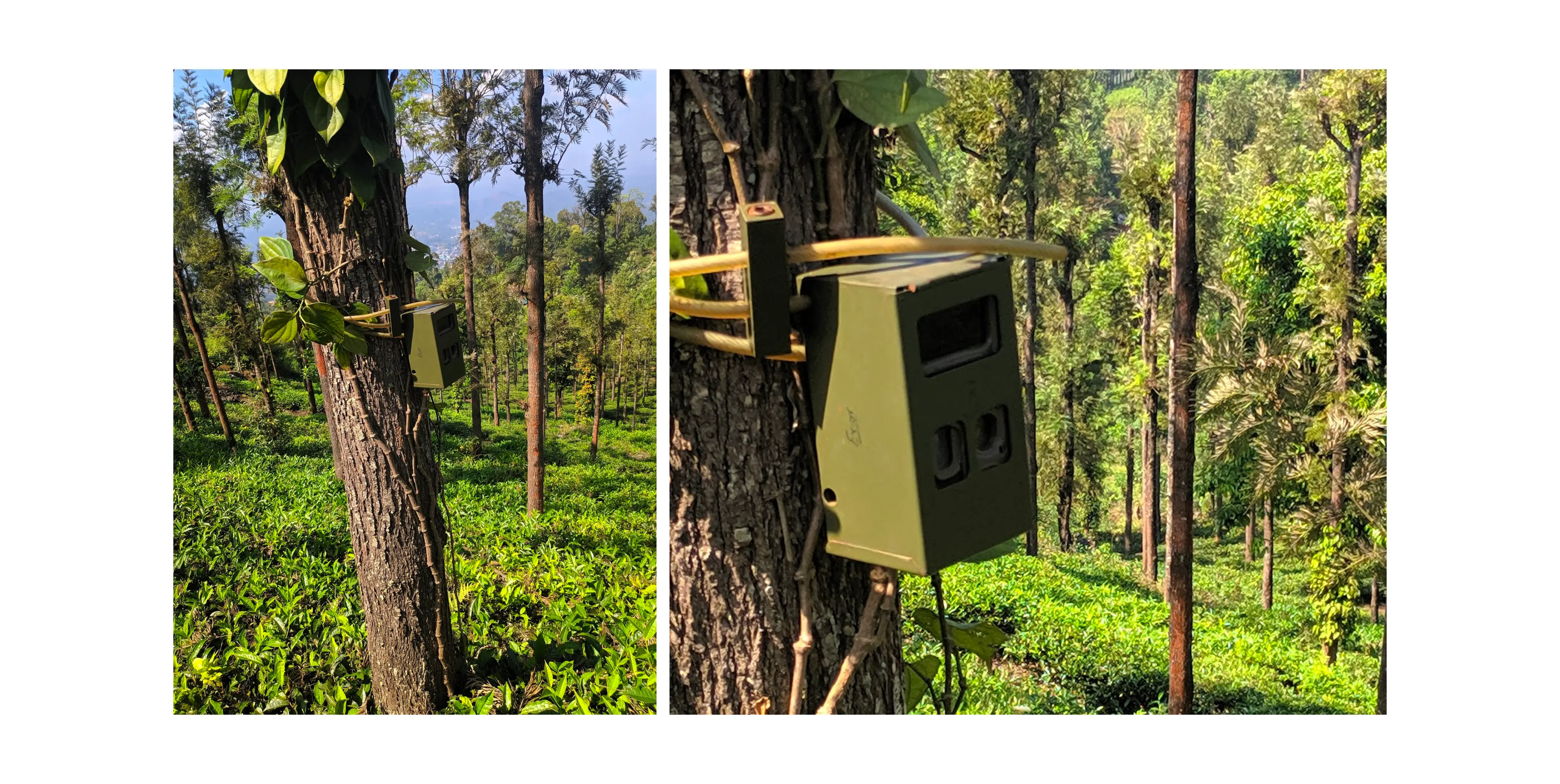
A two-day camp was organized to educate officials and selected locals about the app's functionalities and usage. The introduction of app support for the regional language played a crucial role in helping users follow and take action more easily. The app has significantly reduced the time and cost involved in managing and reporting data.
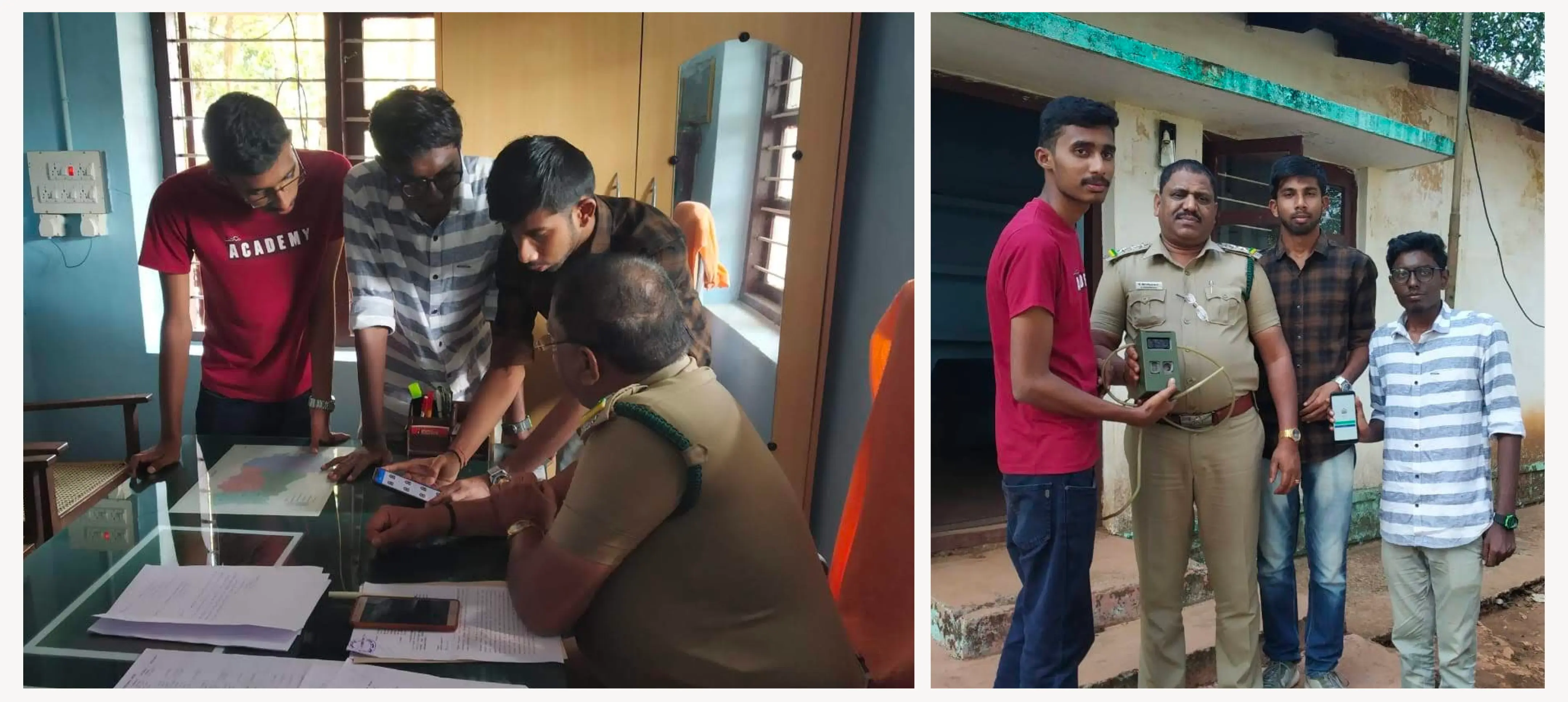
Living the lives of the people in the environment greatly facilitated our empathy with the users, enabling us to identify the best-case solutions for them. Additionally, speaking their own regional language provided an added advantage, allowing us to gather more meaningful and qualitative data from both locals and officials.
While the current prototype shows promise in detecting elephants, the implementation and testing in the environment are pending. This is because it requires specialized professionals and incurs additional costs, making it a priority for the next phase of the project.